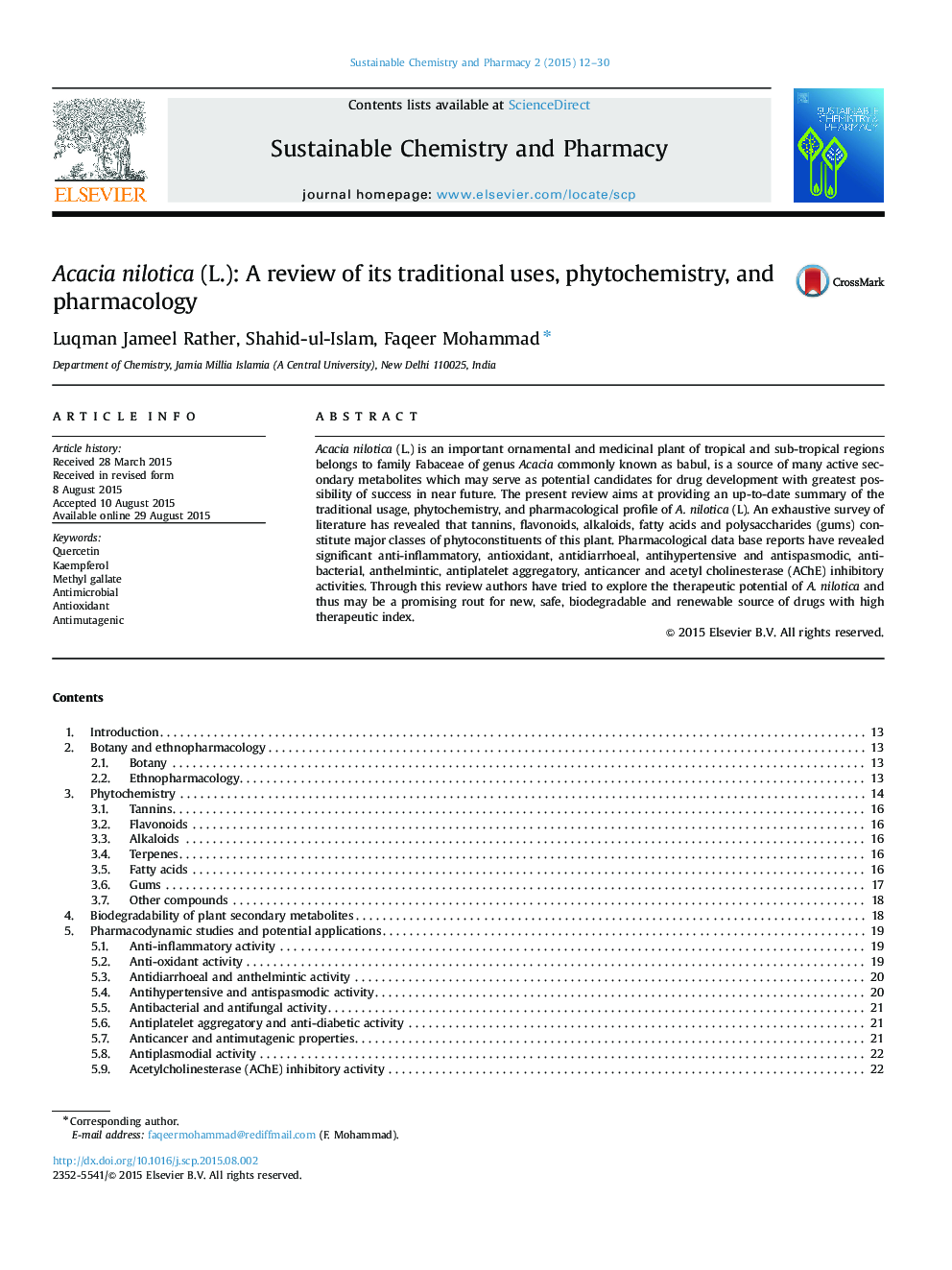| Article ID | Journal | Published Year | Pages | File Type |
|---|---|---|---|---|
| 4434506 | Sustainable Chemistry and Pharmacy | 2015 | 19 Pages |
•Reviews traditional usage, phytochemistry, and pharmacological profile of Acacia nilotica (L).•Identifies A. nilotica as a source of many active secondary metabolites which may serve as potential candidates for development of novel lead compounds.•A. nilotica has a wide-range of biological activities and thus may be a promising rout for new, safe, biodegradable and renewable source of drugs with high therapeutic index.
Acacia nilotica (L.) is an important ornamental and medicinal plant of tropical and sub-tropical regions belongs to family Fabaceae of genus Acacia commonly known as babul, is a source of many active secondary metabolites which may serve as potential candidates for drug development with greatest possibility of success in near future. The present review aims at providing an up-to-date summary of the traditional usage, phytochemistry, and pharmacological profile of A. nilotica (L). An exhaustive survey of literature has revealed that tannins, flavonoids, alkaloids, fatty acids and polysaccharides (gums) constitute major classes of phytoconstituents of this plant. Pharmacological data base reports have revealed significant anti-inflammatory, antioxidant, antidiarrhoeal, antihypertensive and antispasmodic, antibacterial, anthelmintic, antiplatelet aggregatory, anticancer and acetyl cholinesterase (AChE) inhibitory activities. Through this review authors have tried to explore the therapeutic potential of A. nilotica and thus may be a promising rout for new, safe, biodegradable and renewable source of drugs with high therapeutic index.
Graphical AbstractFigure optionsDownload full-size imageDownload as PowerPoint slide
